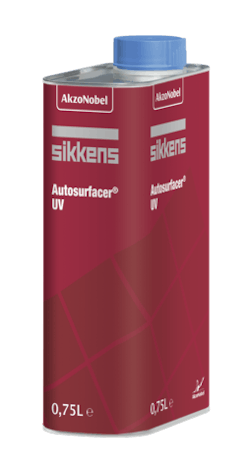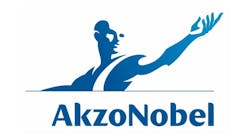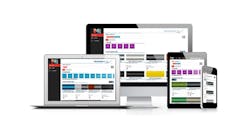Peter Kilkenny from Providence Lacquer, a distributor in Rhode Island, knew that a number of his customers were using Sikkens Autosurfacer UV primer. Curious to find out what they liked so much about the product, he asked around and got responses, from unbeatable speed, great filling properties to zero waste.
Although there were many features that users enjoyed, overwhelmingly, the most common thing Kilkenny heard was how it helps with the cost of labor. Instead of wasting 25-45 minutes for a flash dry, the area is dried in under five minutes, which helps get the vehicle through the shop quicker, allowing for more work to go through and more billable hours to be seen.
“I talked to a shop to get some numbers on the primer,” Kilkenny says. “They said if they do 20 jobs per week, they save an average of 10 hours of flash time. That time can be turned into billable work time. The labor rate around here is $48. That turns out to be about $26,000 per year.”
How it Works
In order to use Sikkens Autosurfacer UV primer, the user puts down the first coat, dries with a UV light for a minute or two, then repeats the process with a second coat. After the two coats are applied, it’s ready to sand. The primer can also be applied directly to metal.
One of the biggest benefits of using a UV primer is the time savings it can provide over conventional 2K primers by offering no mixing and no potlife. 2-K primers, for example, require longer preparation time and also take longer to spray and clean up. Shearer says that it’s a great product and would easily fit into a lean process. Because it’s a 1K/one-step product, shops cut back on material waste and cut back on costs. In fact, the paint usage per repair is significantly less compared to conventional primers.
As an added bonus, UV products are compliant with VOC regulations. In addition, the new hand-held UV curing technology on the market today makes UV curing event faster; delivering three minutes or less, helping to reduce the energy needed to complete jobs, which is better for the environment and will save the shop money.
With the UV primer, there’s minimal mixing time—pour into the cup and go. It is also a good choice for critical and sensitive substrates.
A Wise Investment
Kilkenny thinks that it’s a no-brainer for shops to invest in the Sikkens UV Primer.
“It’s going to get vehicles through faster so they’re not taking up room drying in the shop,” Kilkenny says.
Shearer agrees and adds that shops should use it in place of their current primer because it processes the area quicker and allows time for other things.




